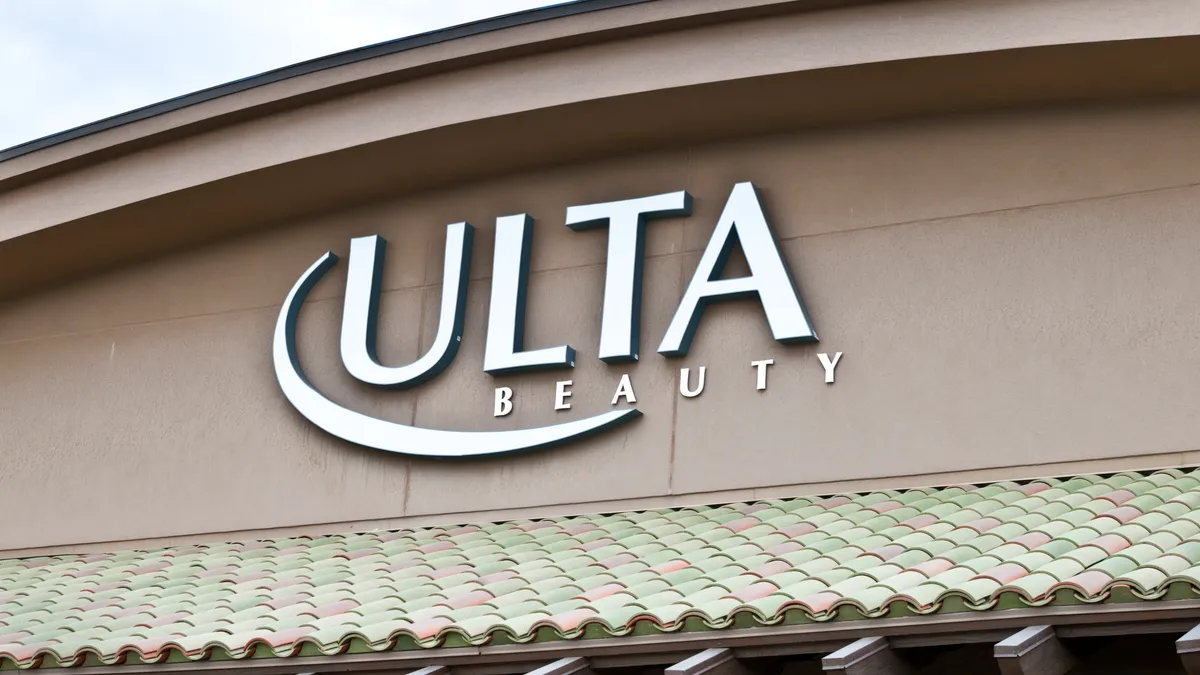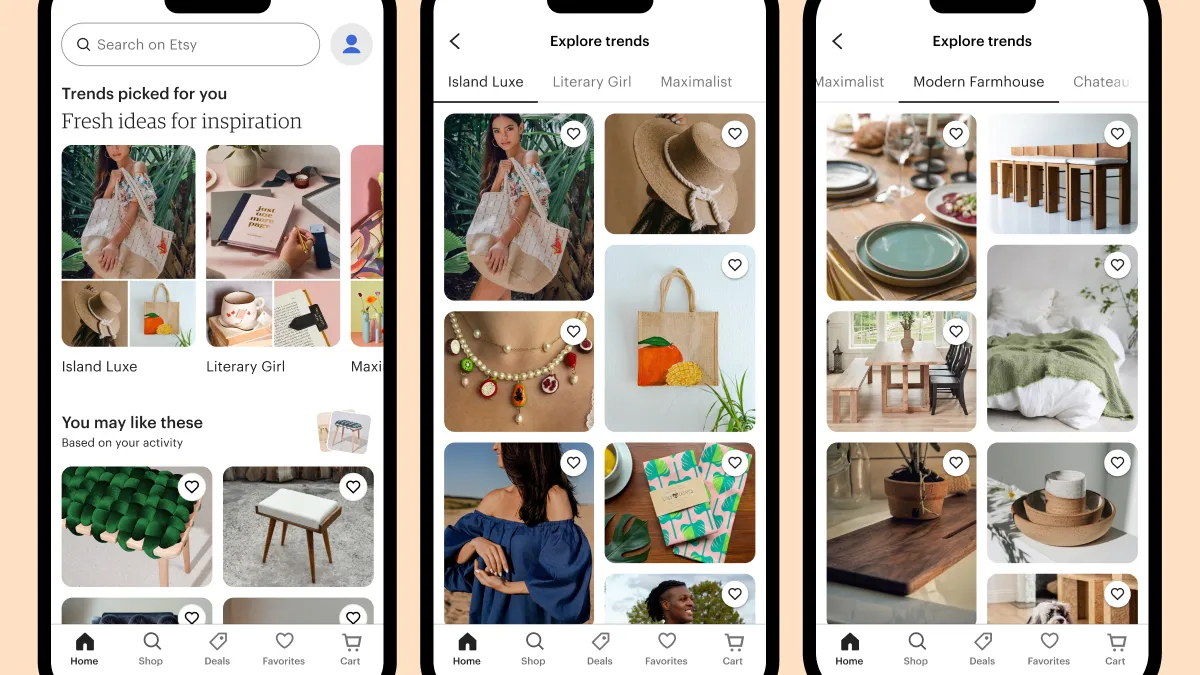The idea to offer virtual skin consultants didn't occur to Sarah Akram until early 2020. Akram, a master esthetician and founder of Sarah Akram Skincare, caters to celebrities like Billy Porter and Zooey Deschanel and has received requests from customers all over the country to resolve their skin concerns.
When it became clear that she needed to temporarily close her business due to the COVID-19 pandemic, Akram decided to offer virtual consultations for her clients. She offers free 20-minute virtual assessments, $50 virtual lessons instructing clients on how to use products and is now selling her skincare products via their online store.
"When I made that choice to close my business, it wasn't mandatory, but I felt like such a responsibility because we're so close up in people's faces," Akram said. "It's just not worth it."
As states and the federal government work to slow the spread of the coronavirus, many nonessential businesses have been ordered closed down. Those retailers, in turn, have had to rethink their technological and communication strategies, experts told Retail Dive. While some retailers lacked the social media and e-commerce infrastructure to maintain customer relationships during the pandemic, other retailers have adjusted their digital strategies to connect with consumers from afar — a shift that will be necessary to keep customers engaged after the panic from the outbreak subsides, experts say.
In addition to the virtual consultations, Akram is also planning a live skincare assessment on Instagram Live. But she's not the only retailer pivoting to digital channels to connect with customers online. Other brands have had virtual lunches, happy hours and outfit try-on sessions, said Alex Fitzgerald, manager of consumer practice at Kearney.
Massimiliano Tirocchi, co-founder and chief marketing officer of Shapermint, said that his direct-to-consumer shapewear company has also changed its virtual interactions with customers. In the past, the brand livestreamed try-on sessions with influencers to its followers, answering product questions from viewers and offering them live coupons, Tirocchi said. But as the coronavirus pandemic continues to keep customers indoors, the brand recently began streaming live yoga practices, meditations and home exercises as well as sessions on how to care for children while working from home, he said.
"I think that after the pandemic, we're going to for sure continue doing live sessions both for content and conversation," Tirocchi said. "That's going to be a big opportunity for the brand and a big trend also."
Fitzgerald said she has seen reports indicating a notable increase in social media, which makes sense given how many people are living and working at home. An April report from App Annie found that consumers spent more than $23.4 billion through app stores in the first quarter. Additionally, international non-gaming spending on iOS exceeded $5 billion and reached about $1 billion on Google Play.
In addition to virtually connecting with consumers, some retailers have also changed their mobile and website strategies. West Elm, for example, has work-from-home video conferencing backgrounds, offers virtual design consultations and has a new interactive "Room Planner," according to a company announcement sent to Retail Dive. Last month, Nike stopped charging subscription fees for its NTC Premium service that gives users workout videos, training programs and expert tips from trainers via its app.
When Shapermint noticed more users searching for shapewear to wear at home, the company tailored its search results to include "at home" to display relevant product recommendations, Tirocchi said. The brand also introduced a selection of shapewear and loungewear to wear at home on the website's home page. The result? An increase in bra and leggings sales, though shapewear continues to be the company's best-seller, he said.
"If you think about long-term shifts, this is an acceleration towards digital."

Alex Fitzgerald
Manager of Consumer Practice, Kearney
Retailers that have already invested in e-commerce have an advantage over retailers that have to transition the demand from offline to online, Fitzgerald said. While some brands have built online commerce and communities and continue to engage with consumers during the outbreak, other retailers, such as off-price retailers and department stores, have to catch up to their competitors after relying heavily on their brick-and-mortar stores, Fitzgerald said.
"If you think about long-term shifts, this is an acceleration towards digital," Fitzgerald said. "We were already seeing it, but this just changes it to beyond just commerce to really solidify the role that digital can play in engagement."
Meanwhile, retailers using digital infrastructure, including their email marketing, social media channels and website, have to prepare their mobile and website traffic to handle the rise in traffic, said Ryan Webber, senior vice president of enterprise mobility at SOTI.
The silver lining of this pandemic, if one could be found, is that retailers are now going to adopt mobile technology at a faster pace than before, which will enable them to accommodate changing consumer behaviors and expectations, Webber said. It's critical for retailers to invest in e-commerce and mobile technologies now, because consumers' in-store and online shopping habits will change, he said.
Webber anticipates that retailers will shift to somewhat bring the in-store shopping experience into consumers' homes through augmented reality, for example. As consumers return to stores, Webber also predicts less interaction between consumers and store associates given that shoppers are accustomed to social distancing, which means there will be a need for technologies like contactless payments, he said.
Companies like Walmart and Starbucks, which already have mobile apps to process payments, can leverage their existing technology to make contactless payments more seamless for consumers going forward, Webber noted. Walmart recently expanded its contactless options for in-store shopping, store pickup and deliveries.
In the meantime, it's not clear whether online sales will be enough to fill the gap left behind by physical store foot traffic. For Akram, the online sales of skincare products are nowhere near in-store purchases, but it has helped a bit so that she could avoid going out of business.
She said she is committed to keeping her staff and will continue with the digital initiatives for as long as possible, and is navigating the government resources available for small businesses.
"I have to be optimistic. We all have to have hopeful hearts," Akram said. "I've just worked very hard to get to where I am, so I refuse to let something like this take me down. I'll do whatever I can to keep my business going."



















